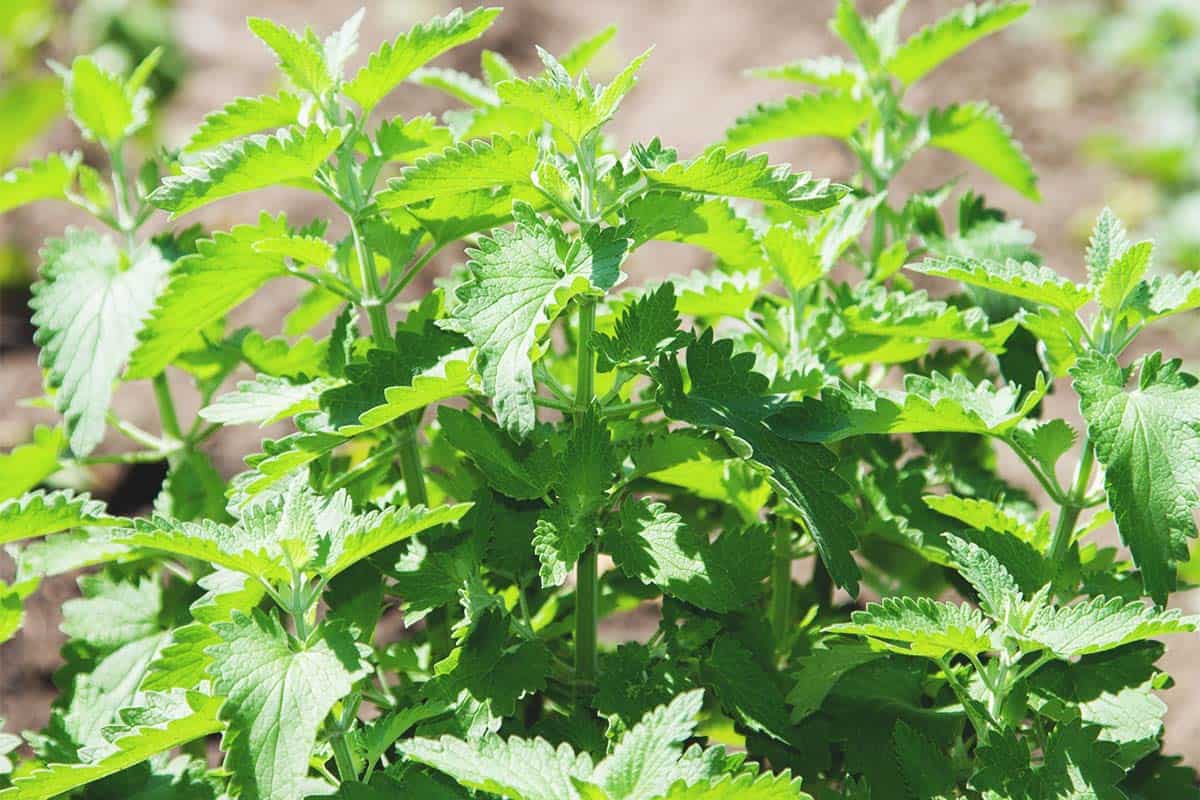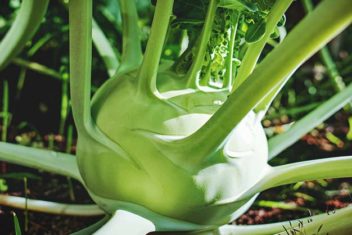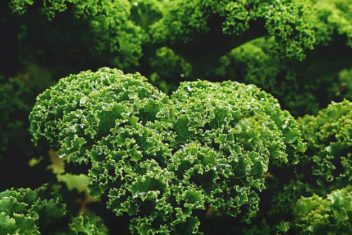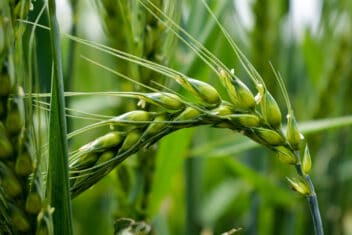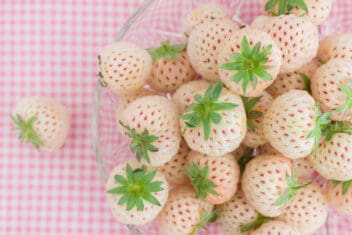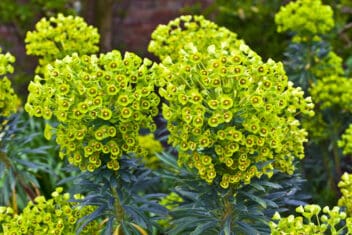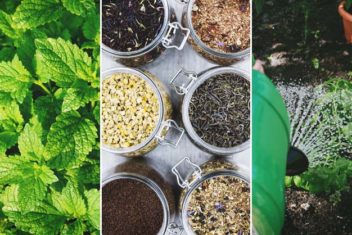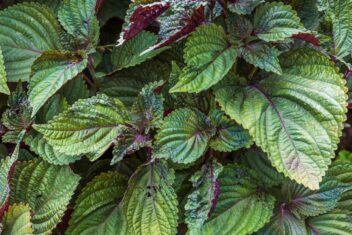Lemon balm is an aromatic, tasty, perennial herb that you can grow in your garden with little trouble. It has a lemon-mint scent that is refreshing and perfect for both hot and cold drinks, as well as added to poultry and meat dishes.
Have you considered growing lemon balm in your garden? If not, you’re really missing out.
Not only does it have a great taste, but it makes a beautiful display in your garden beds. The plants typically reach 12-24 inches tall with small clusters of white to yellow flowers.
Interested in learning more? Let’s dive in.

Lemon Balm Varieties
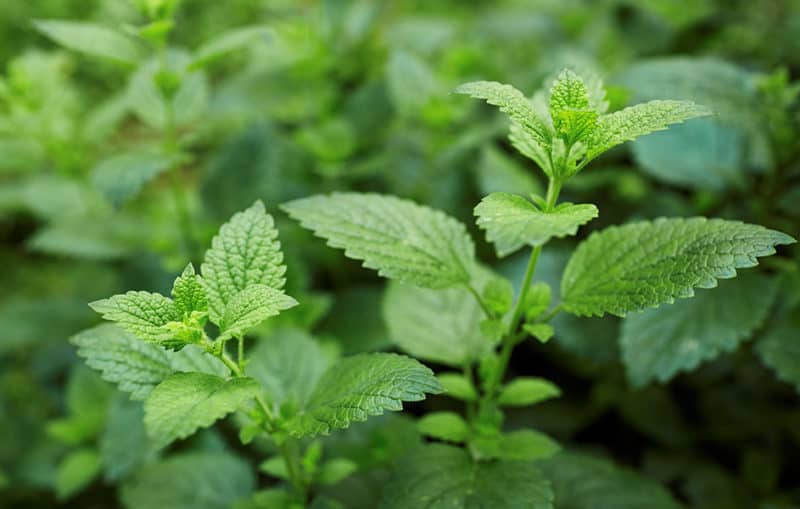
Lemon balm is known by many names. You might have heard it called Melissa, sweet balm, honey plant, or garden balm. Regardless of what it’s called, there are several varieties out there for you to try.
Aurea
This variety of lemon balm has a dark green leaf with yellow variegation in the spring. By the summer, the yellow starts to fade. The flavor of this cultivar has a mild taste.
Compacta
If you don’t want a lemon balm variety that sprawls, Compacta is a sterile cultivar that only reaches 6 inches tall and 12 inches wide. It doesn’t flower or create seeds, and the plant has dark green leaves with a mild to moderate flavor.
Citronella
This variety attracts a lot of bees and pollinators to your garden. It has a soothing scent, and it’s also a flavorful variety. This cultivar grows 10-12 inches in height.
Growing Lemon Balm in Your Garden
Lemon balm grows in United States Department of Agriculture plant hardiness zones 4 through 9, though you’ll need to give the plant a bit of mulch in the winter to protect it if you live in zone 4.
Sun Requirements
Lemon balm needs to be planted in full sunlight, but if you only have a location with partial shade, that works as well. The plant can tolerate some shade.
Soil Requirements
Make sure that you put your plants in well-draining, sandy loam soil. However, the good thing about lemon balm is that it grows in almost any soil, so long as it’s not super wet. Lemon balm won’t tolerate soggy roots.
Also, make sure the pH level is between 6.7 to 7.3.
Starting Lemon Balm by Seed
You need to start the seeds indoors 6-8 weeks before you plan to transplant lemon balm into your garden. You cannot transplant until after the last spring frost. So, find your final frost date based on your USDA hardiness zone and count back 6-8 weeks.
Before you start the seeds indoors, you need to stratify them. That means they need to be chilled or frozen for at least seven days before you take them out of the cold and plant them into your seed starting containers.
Lemon balm is slow to germinate, and it takes around 14 days to sprout. Make sure you have a light, either in the form of sunlight or grow lights, on the seeds because light is required for germination. Also, don’t cover the seeds too much with soil.
Planting Lemon Balm in the Garden
Once the danger of frost is gone, it’s time to transplant your lemon balm seedlings into the garden. Space the seedlings 18 inches apart. Rows of lemon balm need to be 18-24 inches apart; these aren’t small plants!
You also can sow lemon balm seeds directly into the garden. To do so, wait until the last frost date passes and sow the seeds 1/4 inch deep. Keep the soil moist until the seeds germinate.
Once sprouted and 3-4 inches tall, thin the seedlings 18 inches apart.
Can I Grow Lemon Balm in a Container?
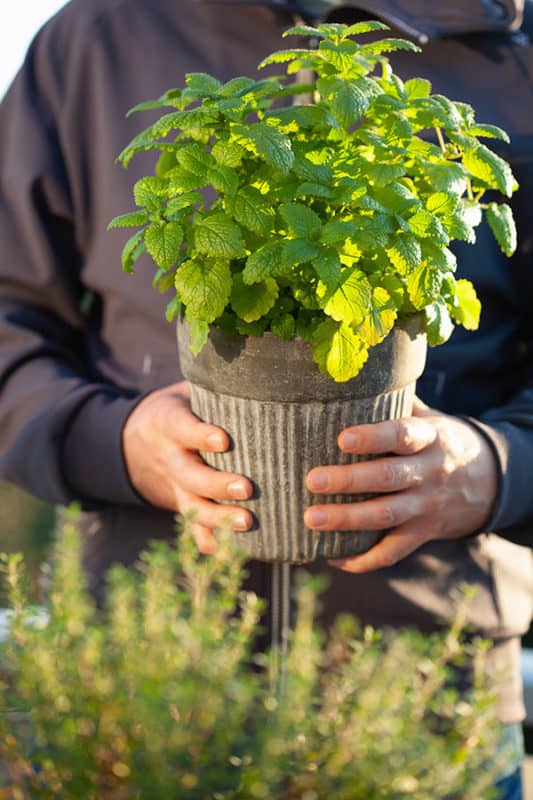
You can grow lemon balm in containers, but they won’t be perennials; they’ll grow as annuals. You need to pick a container that is 6-8 inches deep and wide. Depending on your climate, you might be able to overwinter the plant in an unheated garage or patio.
How to Care for Lemon Balm
Once your lemon balm is planted in your garden, it’s time to take care of it. Luckily, this is an easy plant to care for.
How Much to Water Lemon Balm
This plant requires regular, evening watering. It’s best to grow somewhere that has slightly moist soil. However, once you establish the plant, it does tolerate drought well.
Fertilizing Lemon Balm
You typically don’t need to give lemon balm any extra feeding once it’s planted in the garden. You can add a side dressing of compost next to the plants during the growing season.
Watch The Spread
One thing you need to watch out for is the invasive nature of lemon balm. If you aren’t careful, this plant likes to spread out everywhere; it spreads by underground roots. That shouldn’t be a surprise since lemon balm is in the mint family.
Try burying a container in the garden to keep the roots in one place.
Deadhead to prevent seeds from spreading. You also need to make sure you remove all the plant parts after you’ve deadheaded. Otherwise, they’ll self-sow into the ground.
Propagating Lemon Balm
As your plant grows, you can propagate and grow it in other areas of your garden. Propagating is also a great way to give your friends and family lemon balm plants as well.
If you want to propagate the plant, remove a 3-inch or larger section of stem with sterilized pruners. Then, dip the cutting into a rooting hormone before you plant the stems in organic potting soil.
Water the cuttings immediately and keep them out of direct sunlight. Within 3-4 weeks, they’ll take root, especially if you keep the pots on a heating pad.
The best time to take a cutting is in the spring or the fall. If you take a cutting in the spring, take a few inches off below the tips of new growth. In the fall, you should take from the stems that are closer to the base of the crown that has not flowered.
Common Pests and Diseases
Lemon balm doesn’t typically have any serious pest problems, but you do need to watch out for some different plant diseases.
Mint Rust
Mint rust affects plants that are in the mint family or related to the mint family. It looks like rust developing on plants, with orange to rust-colored spots on the underside of the lower leaves. If left on its own, it can cause the leaves to turn brown and drop.
Remove any affected leaves and keep all plant debris away from your lemon balm plants. Keep ample space between plants for proper airflow.
Powdery Mildew
This is one of the most common fungal diseases, and it appears on dozens of plants. It looks like a whitish powdery substance on the leaves.
Typically, powdery mildew is an issue that develops in either hot and humid climates with cooler nights or from too much water or moisture on the leaves.
It’s best to work on preventing powdery mildew than trying to get rid of it. Providing proper air circulation with regular pruning and harvesting is a must.
Septoria Leaf Spot
Here is another fungus that develops on the leaves of the lemon balm plant. Septoria leaf spot causes dark brown or black spots on the leaves, appearing most often when the temperatures are warm with high humidity.
Make sure you remove and dispose of the infected leaves. If you want to treat the infection, try spraying the plant with a mixture of water, baking soda, dish soap, and horticultural oil.
Companion Plants for Lemon Balm
Lemon balm has a lot of great companion plants. It’s full of fragrance, so you can plant it anywhere that you want to deter insects. That’s particularly helpful if you plant lemon balm near cabbage because it attracts insects that typically destroy cabbage family crops.
A few companion plants for growing lemon balm include:
- Cabbage
- Broccoli
- Cauliflower
- Brussel sprouts
- Hollyhocks
- Nasturtiums
- Fruit trees
Don’t grow lemon balm with fennel or potatoes.
Harvesting and Storing Lemon Balm
Pinch off and use the leaves or sprigs throughout the entire growing season. You’ll need a garden pruner to snip off the leaves and stems so you don’t accidentally damage your plant.
You can store lemon balm wrapped in cotton cloth in the refrigerator and pull it out when you want to use the herbs in your dishes or drinks. I love a good lemon balm mojito.
It also makes a tasty tea that some say is calming and helps ease you to sleep.
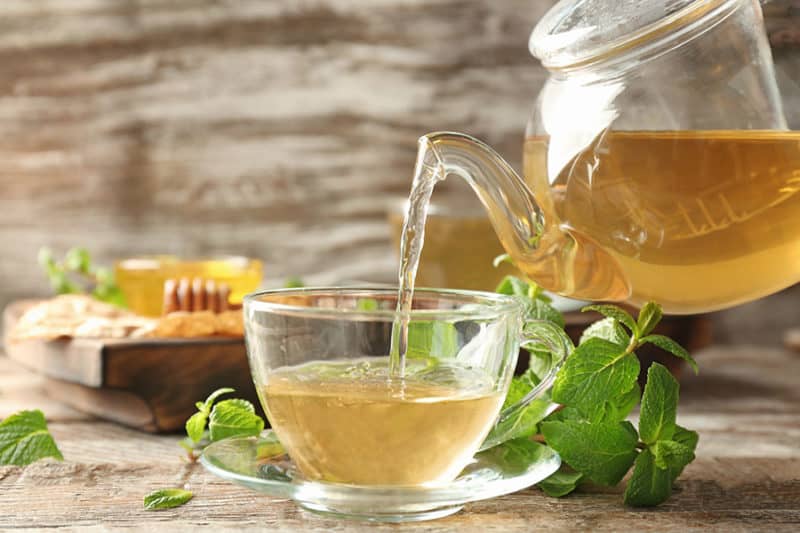
If you want a leaf with a strong aroma, the older, lower leaves have the most potent scent. If you’re going to dry the leaves, the best time to pick those leaves is in the summer, before the plant starts to flower.
By midseason or fall, cut back the plant by half. Within 4-6 weeks, the plant will have brand new leaves.
Be Patient When Growing Lemon Balm
Growing lemon balm in the garden takes a bit of time in the beginning, but once established, lemon balm grows freely and easily in most conditions. Give it a try; you’ll love the flavor in your dishes and drinks.
